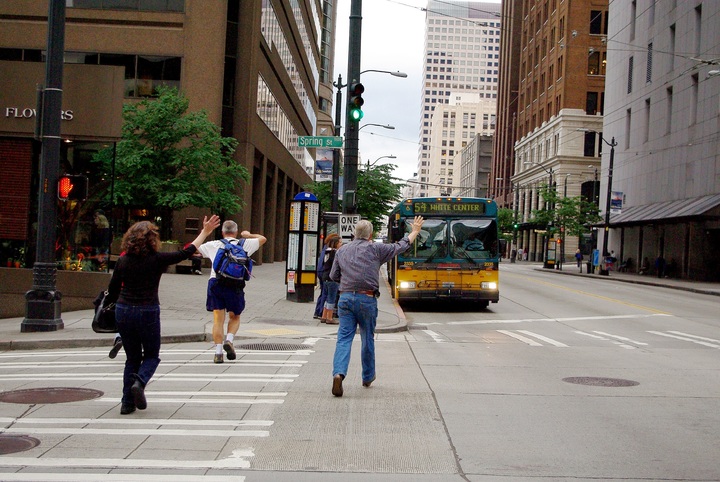Published on June 19, 2018

Walking is ordinary. It is so ordinary, most of us do it without thinking: You put one foot in front of the other to get to the bus, to walk from your car to the office, to pick up something from the store. It requires only shoes — and, because we live in Seattle, some days a raincoat or umbrella.
Walking can introduce you to neighbors. Walking can shed pounds. Walking can create time. When 24-year-old Bénédicte Bicaba puts her feet to earth in her Roosevelt neighborhood, her mindset shifts. “I’ll get there when I get there.”
Seattle’s street design encourages foot-powered movement, though folks in hilly neighborhoods or near Aurora or Lake City Way might want a word with the city’s original planners. Mostly, our streets are narrow, with tight turns that force drivers — the biggest danger to walkers — to slow down. The city has lowered speed limits, focused on making transit hubs pedestrian-friendly and tested timed crosswalks to help drivers see pedestrians, says Jim Curtin, traffic safety coordinator for the Seattle Department of Transportation.
Professor Emeritus in the department of Urban Design and Planning at the University of Washington Anne Vernez Moudon quoted on her research and experience about Seattle’s walkable neighborhoods, and geospatial analysis of walking.
Continue Reading at The Seattle Times
Originally posted on The Seattle Times by Nicole Tsong